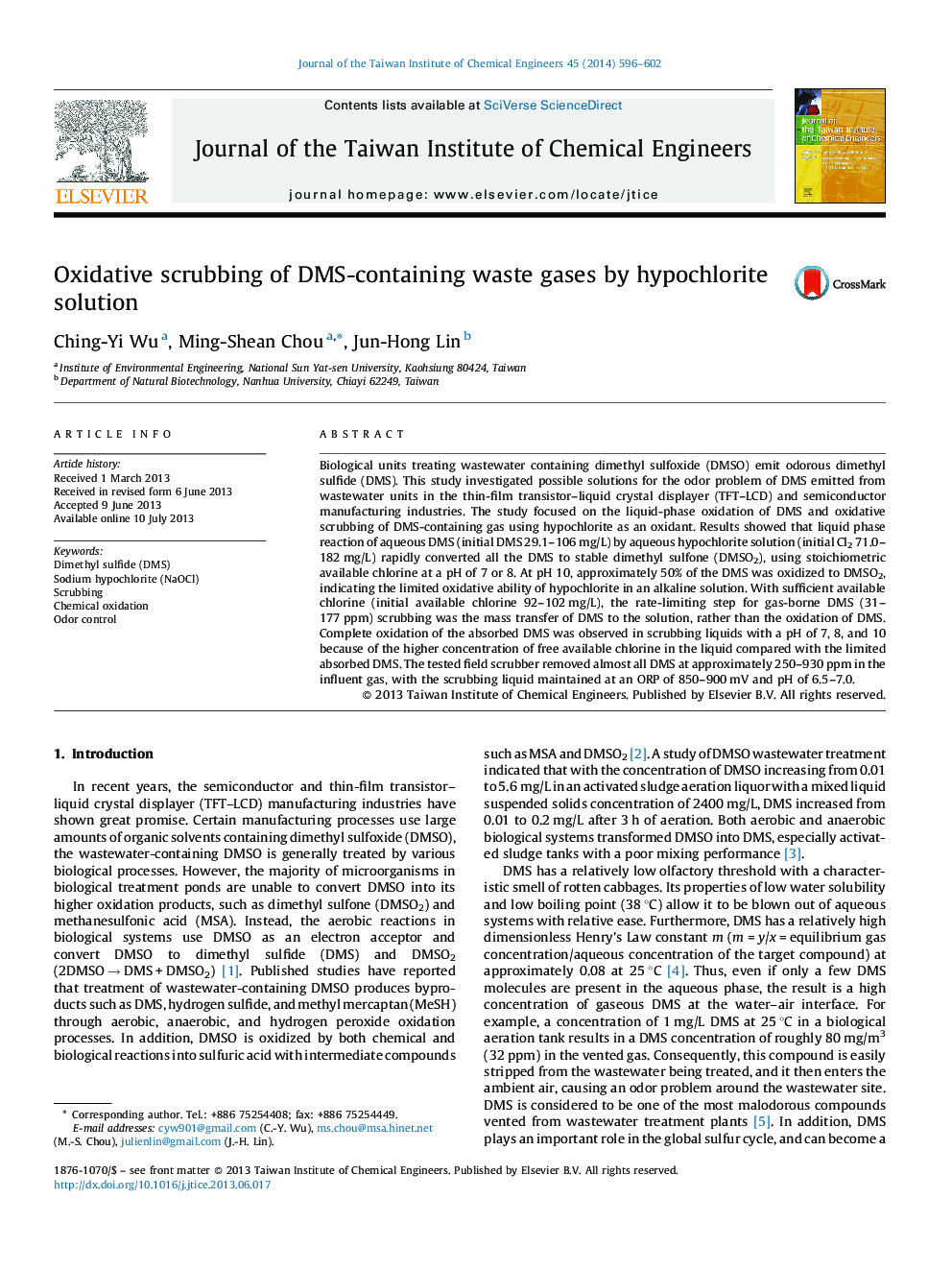| کد مقاله | کد نشریه | سال انتشار | مقاله انگلیسی | نسخه تمام متن |
|---|---|---|---|---|
| 691400 | 1460433 | 2014 | 7 صفحه PDF | دانلود رایگان |

• This study confirmed that gas-borne dimethyl sulfide (DMS) could easily be scrubbed and oxidized to dimethyl sulfone with neutral to alkaline hypochlorite solution containing stoichiometric available chlorine.
• The full-scale scrubbing liquid for DMS-containing waste gases emitted from wastewater units in the TFT–LCD manufacturing industry has been confirmed to be with an ORP of 850–900 mV and pH of 6.5–7.0.
• The possible chlorinated byproducts of effluent gas were sampled and analyzed from scrubber system, and the concentrations were far below the maximum regulation values set by the Environmental Protection Bureau of Taiwan.
Biological units treating wastewater containing dimethyl sulfoxide (DMSO) emit odorous dimethyl sulfide (DMS). This study investigated possible solutions for the odor problem of DMS emitted from wastewater units in the thin-film transistor–liquid crystal displayer (TFT–LCD) and semiconductor manufacturing industries. The study focused on the liquid-phase oxidation of DMS and oxidative scrubbing of DMS-containing gas using hypochlorite as an oxidant. Results showed that liquid phase reaction of aqueous DMS (initial DMS 29.1–106 mg/L) by aqueous hypochlorite solution (initial Cl2 71.0–182 mg/L) rapidly converted all the DMS to stable dimethyl sulfone (DMSO2), using stoichiometric available chlorine at a pH of 7 or 8. At pH 10, approximately 50% of the DMS was oxidized to DMSO2, indicating the limited oxidative ability of hypochlorite in an alkaline solution. With sufficient available chlorine (initial available chlorine 92–102 mg/L), the rate-limiting step for gas-borne DMS (31–177 ppm) scrubbing was the mass transfer of DMS to the solution, rather than the oxidation of DMS. Complete oxidation of the absorbed DMS was observed in scrubbing liquids with a pH of 7, 8, and 10 because of the higher concentration of free available chlorine in the liquid compared with the limited absorbed DMS. The tested field scrubber removed almost all DMS at approximately 250–930 ppm in the influent gas, with the scrubbing liquid maintained at an ORP of 850–900 mV and pH of 6.5–7.0.
Journal: Journal of the Taiwan Institute of Chemical Engineers - Volume 45, Issue 2, March 2014, Pages 596–602